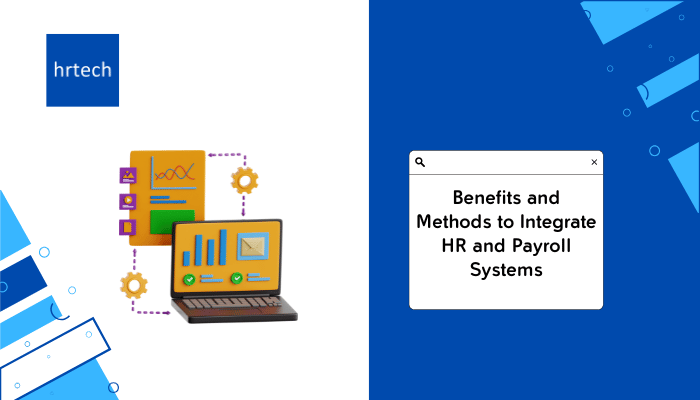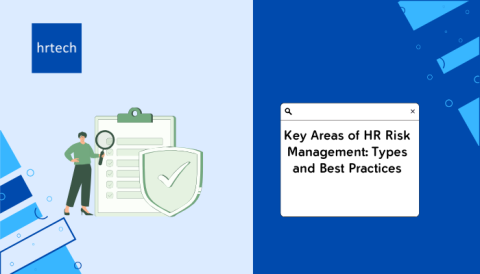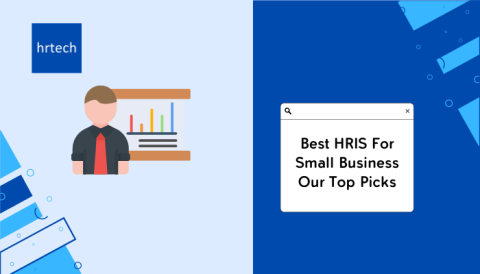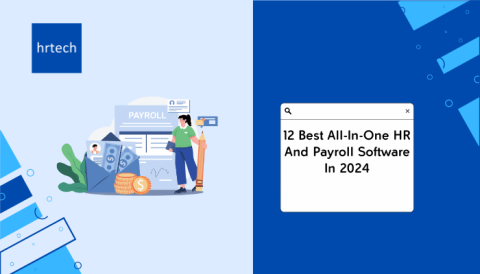Integrating payroll and HR software offers significant advantages for businesses looking to streamline their operations. By combining HR and payroll functions into a unified system, companies can reduce administrative workload, minimize errors, and enhance overall efficiency.
Whether using pre-built integrations, bundled systems, or custom-built solutions, choosing the right method is crucial to ensure seamless functionality and alignment with business needs.
This integration not only simplifies processes but also improves compliance, data accuracy, and employee satisfaction, making it a valuable investment for organizations.
What is the importance of integrating HR and payroll systems?
Integrating HR and payroll systems is crucial for streamlining operations and ensuring accuracy across both departments. With integrated payroll and HR software, businesses can reduce manual entry errors, save time, and improve compliance with regulations.
This integration creates a more cohesive workflow, benefiting both employees and management. Additionally, using tools like the best remote employee monitoring software can further enhance operational efficiency by tracking productivity and ensuring remote teams stay connected.
Key points include:
- Automated data sharing between HR and payroll
- Reduced risk of payroll errors
- Centralized employee information
- Improved reporting and analytics capabilities
How does integrating HR and payroll systems benefit businesses?
Integrating HR and payroll systems through integrated payroll and HR software streamlines administrative tasks, reduces errors, and saves time. This leads to a successful HR transformation by enhancing compliance and improving overall business efficiency.
| Benefit | Explanation |
| Real-Time Data Sharing | HR and payroll systems share information instantly, so any updates, like promotions or address changes, are immediately reflected in payroll, avoiding mistakes or delays. |
| Flexible Payroll Options | Businesses can easily customize payroll to handle different pay schedules, bonuses, or benefits for various departments or regions without extra manual work. |
| Better Data Security | By combining HR and payroll into one system, the risk of data breaches is lower, since there’s less movement of data and stricter access control. |
| Faster Employee Onboarding | When a new employee’s information is added to the HR system, it automatically updates payroll, speeding up the process and reducing duplicate work. |
| Automatic Tax and Compliance Updates | The system automatically applies changes to tax laws and ensures compliance with local labor rules, especially helpful for businesses in multiple regions. |
| Employee Access to Information | Employees can see their payroll, benefits, and leave balances in one place, reducing questions for HR and giving employees control over their data. |
| Easy Integration with Other Tools | Modern systems can connect with other software, like time-tracking or accounting tools, making business operations more efficient. |
| Grows with Your Business | As your company expands, the integrated system can easily handle more employees, departments, or locations, making it a long-term solution. |
What Are the Key Benefits of Integrating HR and Payroll Systems?
Integrating HR and payroll systems allows businesses to manage HR employee records more efficiently by centralizing data, reducing duplication, and minimizing errors. It also improves compliance and payroll accuracy, leading to better overall workforce management.

Below are the five key benefits of adopting integrated HR and payroll systems:
1. Streamlined Processes
Integrating HR and payroll systems reduces the need for manual data entry, as information flows seamlessly between departments. This integration saves time and lowers the risk of human error in handling employee records and payroll tasks.
- Fewer repetitive tasks
- Automated payroll and HR functions
2. Improved Compliance
An integrated system ensures that your business stays compliant with local regulations, such as tax laws and employment standards. By automatically updating based on new legislation, it reduces the risk of penalties and mistakes.
- Automatic updates for tax and labor laws
- Lower chances of non-compliance
3. Data Accuracy & Security
Integrated payroll and HR software provides real-time updates, ensuring accurate data across the system. Additionally, stronger encryption and data protection measures are embedded, keeping sensitive information secure.
- Real-time syncing of employee records
- Stronger data encryption for enhanced security
4. Increased Employee Satisfaction
Employees benefit from having easy access to their payroll, leave balances, and benefits through self-service features. This transparency boosts their trust in the system and reduces the need for HR inquiries.
- Self-service portals for employees
- Quick access to payslips and personal data
5. Better Reporting & Strategic Insights
Integrated systems offer more robust reporting tools, helping businesses track payroll expenses, monitor employee trends, and make informed decisions. These insights contribute to more strategic workforce planning.
- Comprehensive data analytics
- Informed decision-making through detailed reports
This clear integration of payroll and HR functions boosts overall business efficiency while ensuring a more streamlined and secure approach to managing your workforce.
What Are the Effective Methods for Integrating HR and Payroll Systems?
One method for integrating HR and payroll systems is using HR database systems that connect both functions, ensuring all employee data is in one place. This helps automate processes like payroll calculations and updating employee records, making everything work smoothly together.
| Method | Description | Considerations | Advantages |
| 1. Bundled HRIS and Payroll Solutions | These systems combine HRIS and payroll into a single platform. | They provide seamless integration and simplify data management with one vendor handling both services. | Limited customisation and may require switching to a new system. |
| 2. Systems with Pre-Built Integrations | Pre-built APIs or connectors allow HR and payroll systems to integrate easily. | Quick integration, flexible vendor options, and faster setup. | May not cover all business needs and might require regular updates. |
| 3. Custom-Built Integrations | Tailored integrations developed to meet specific business needs. | Highly customisable, adaptable to unique processes, and offers greater control. | Requires more time, resources, and skilled IT staff. |
What should businesses consider when evaluating integration options for payroll and HR software?
When evaluating integration options for integrated payroll and HR software, it’s important to consider how well the systems work together to reduce errors. Following HR risk management best practices helps ensure the software improves data security and compliance with regulations.

Below is a detailed explanation of each important point to guide the decision-making process:
1. Integration Method Selection
Choosing the right integration method is essential. Businesses can opt for bundled systems, pre-built integrations, or custom-built solutions. Each approach offers different levels of flexibility, customisation, and ease of use, depending on the specific requirements of the company. The key is to select a method that aligns with the organization’s existing systems and processes.
2. Technology Compatibility
It’s crucial to ensure that the selected integrated payroll and HR software works smoothly with the current technology infrastructure. Compatibility with existing HRIS systems, payroll platforms, or any third-party software used in the business is necessary to avoid costly system overhauls and to ensure a seamless integration process.
3. Cost and Budgeting
The cost of integration is a significant factor. Whether choosing a ready-made or custom-built system, businesses need to consider not only the upfront cost but also long-term expenses, such as licensing, maintenance, and updates. The goal is to find an integration solution that delivers value for money while staying within the company’s budget.
4. Scalability
A scalable solution ensures that the integrated payroll and HR software can grow with the business. As companies expand, they need systems that can handle a growing number of employees, locations, and potentially more complex payroll and HR needs. Evaluating scalability helps avoid the need to re-invest in new systems later.
5. Customisation Needs
Every business has unique HR and payroll requirements. Some industries might require specific reporting features, while others may need particular automation or compliance tools. Customisation allows businesses to tailor the software to meet their specific needs, ensuring that the system is flexible enough to adapt to their processes.
6. Support and Maintenance
Ongoing support and maintenance are crucial to ensuring that the integrated payroll and HR software continues to operate smoothly. Businesses should assess the level of support provided by the vendor, including help with troubleshooting, software updates, and any future adjustments or integrations that might be needed as the company evolves.
These factors are essential for evaluating and selecting the best integrated payroll and HR software, helping businesses streamline their processes, reduce manual tasks, and improve efficiency.
Improved Processes and Efficiencies with Integrated Payroll and HR Software
Adopting integrated payroll and HR software leads to significant improvements in processes and operational efficiency. By connecting HR and payroll systems, businesses can eliminate many manual tasks through the use of automated payroll software, reducing the time spent on administrative work while minimizing the risk of errors.
This integration also fosters better collaboration between departments and ensures that key information is automatically updated in real-time, leading to smoother, more efficient workflows.
- Reduces duplicate data entry and manual errors
- Enhances communication and collaboration between HR and payroll team
- Automates updates, streamlining processes and workflows for better efficiency
Future Trends in HR and Payroll System Integration
As technology continues to advance, the future of integrated payroll and HR software is evolving rapidly. Key trends include the rise of cloud-based systems and AI-driven integrations, a stronger focus on automation and machine learning, and an increased emphasis on cybersecurity. These developments, along with HRMS and payroll alternatives, are set to transform how businesses manage their HR and payroll processes, making them more efficient, secure, and intelligent.

Cloud-Based and AI-Driven Integrations:
Cloud-based systems are becoming the standard for integrated payroll and HR software. They offer real-time updates, remote accessibility, and seamless data synchronization, particularly valuable in today’s remote working environment.
AI is increasingly being used to automate tasks and improve decision-making by analyzing vast amounts of data, helping businesses optimize payroll processes and HR analytics.
Focus on Automation and Machine Learning:
Automation is reducing the time spent on repetitive tasks like payroll calculations and employee data management, allowing HR teams to focus on more strategic initiatives. Machine learning is being applied to identify trends, predict anomalies in payroll, and even anticipate workforce needs, driving smarter business decisions.
Cybersecurity:
With the growing reliance on digital systems, there’s a heightened emphasis on data protection. Integrated payroll and HR software is increasingly adopting stronger encryption methods and multi-factor authentication to safeguard sensitive employee information.
Compliance with regulations, such as GDPR, is also becoming a key feature, ensuring that businesses stay within legal requirements as data protection laws evolve.
These trends underscore the importance of adopting integrated payroll and HR software that is future-proof, ensuring that businesses can stay ahead in an increasingly tech-driven landscape.
Conclusion
Integrated payroll and HR software offers numerous advantages that can significantly improve business operations. By streamlining processes, reducing manual errors, and providing real-time data synchronization, these systems boost overall efficiency and help manage compliance more effectively. It’s important for businesses to take a step back and evaluate their current systems to see where an integrated payroll and HR software solution could bring the most value.
In the growing world of hrtech, integrated solutions are becoming essential for businesses that want to stay competitive. These tools not only help manage administrative tasks but also provide strategic insights that support better decision-making.
Ready to take your payroll and HR systems to the next level? Explore the leading integrated payroll and HR software solutions on the marketplace today and find the right fit for your business. Visit our marketplace to discover the best options customized to your needs.





